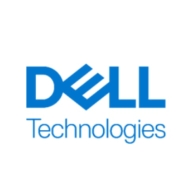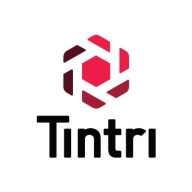


Tintri VMstore T7000 and Dell PowerMax are leading contenders in the enterprise storage solutions category. Tintri VMstore T7000 seems to have the upper hand in ease of deployment and customer support, while Dell PowerMax excels in data reduction and high performance.
Features: Tintri VMstore T7000 is known for its intuitive management and VM-specific QoS along with enhanced visibility into VM performance. It provides impressive latency management and is very user-friendly. Dell PowerMax, with its NVMe-based architecture, offers exceptional compression and deduplication, providing high performance and reliability suitable for data-intensive environments.
Room for Improvement: Tintri VMstore T7000 could improve deduplication capabilities and enhance cloud integration and replication features. The pricing and licensing model also need refinement. Dell PowerMax users point out the need for improved pricing structures, configuration simplification, and better cloud integration.
Ease of Deployment and Customer Service: Tintri VMstore T7000 is lauded for easy deployment, especially in on-premises setups. Its proactive technical support often solves issues before clients notice them. Dell PowerMax also offers dependable customer service, though Tintri is seen as slightly more hands-on.
Pricing and ROI: Tintri VMstore T7000 offers competitive pricing with favorable ROI due to ease of management and reduced overhead. Dell PowerMax's higher cost is justified by its performance and comprehensive feature set. Users should evaluate specific performance needs to determine the value of PowerMax's higher price.
By opting for the gold subscription every three years, you get a free upgrade to the latest controller release.
If you wait more than seven years to buy another one, you get a return on your investment.
During a DCDR setup and migration from VMAX to Dell PowerMax, what was planned as a two-day downtime was completed in just three to four hours.
The performance metrics or benchmarks I use to measure success with Dell PowerMax include uptime as well as our response times on our platforms, both of which are exactly where we want them to be, which is five nines and as fast as possible.
My client has seen significant ROI since the install, and when you don't go down, that's an ROI in and of itself.
I accidentally had a volume or VMstore running up to 95%, but it was no issue. The performance was still top-notch despite being used over 90%.
We also had one outage where a controller of one of the products had failed and had to be replaced on-site.
Customers always have their issues resolved promptly.
Pure has good storage.
I would rate Dell PowerMax support as a ten, as I have never had an issue with Dell support as it relates to this product.
ProSupport Next Business Day offers part replacement within four hours for data leaks.
Dell support for Dell PowerMax is exceptional, rating a perfect 10 out of 10.
Their support team provides excellent assistance and effectively addresses issues.
It is highly scalable.
It is suitable for both medium-sized and enterprise businesses.
It hasn't broken down anytime in the last six to seven years, despite hurricanes, earthquakes, and power outages.
Scalability is not an issue.
Dell PowerMax is good for enterprises, and it also depends on how much workload you're going to bring in on Dell PowerMax in terms of performance and how many users are going to use the database you're hosting.
PowerScale is better suited for AI and overall buzz solution currently.
You do not need to purchase fully populated or maxed-out boxes on day one; instead, you can start with half-populated boxes and expand as your needs grow, adding disks as necessary.
During the eight years, there have been no problems such as hardware failure or stopping.
I would rate the stability of the solution as a ten out of ten.
I would rate the stability of the product at seven out of ten.
These patches can be applied on the fly without requiring software upgrades or system downtime.
I would rate it nine out of ten since there are no required downtimes, even during firmware upgrades.
There has been no downtime with Dell PowerMax; it's been extremely reliable, easy to manage, easy to upgrade, and trustworthy as we've upgraded over the years from one version to another.
A new controller was shipped and arrived the next day.
We would appreciate a built-in transparent failover in the next release to eliminate the need for a separate metro cluster.
I'm eagerly anticipating the roadmap's promise of introducing multiple controllers, which could significantly boost scalability and resilience.
We mostly rely on long-term releases. We don't need the most up-to-date features, but we need a reliable environment.
Compared to competitors such as NetApp, which integrates with public cloud hyperscalers (GCP, Azure, AWS), Dell PowerMax lacks in this aspect.
Dell can assist by providing plug-and-play integrated templates that allow customers to drag, drop, modify, and connect with any target system for generating snapshots without logging into the storage directly.
Dell PowerMax NVMe is very reliable storage and cannot experience downtime.
Tintri could improve by ensuring shorter times for support and compatibility when there are new releases from partners like VMware or Microsoft.
Maybe some sort of spreadsheet or visual tool would help. It could show the amount of data and servers we have, guide us on which particular build to choose, and estimate costs.
While the prices may be higher than those of other vendors, we see it as a market leader with benefits.
The support can be a bit pricey, but the solution is more cost-effective than anything else out there.
I would give it a nine out of ten in terms of costliness.
The higher cost compared to other vendors is justified by additional features, vendor-managed upgrades, and superior support services.
It is the best choice for large projects in terms of price and features compared to midrange solutions.
The price is starting from $500,000.
While it might seem expensive per gigabyte initially, the practical capacity and the reduced need for additional backup and storage personnel make it fairly priced.
Pure Storage has signature security technology, which cannot be deleted, even if you are an administrator.
The platform's robust features include excellent sustainability tracking, and a comprehensive dashboard offering insights into IOPS, bandwidth, performance, and virtual activities.
Its data compression feature is the best that we have ever seen.
NVMe provides additional fast cache, similar to random access memory (RAM), which improves overall system performance and read/write experience for users.
Dell PowerMax NVMe is very supportive of our operational growth since we require daily performance from our core banking systems and need to facilitate data movement efficiently.
The key benefits of using Dell PowerMax, quantified in terms of saved hours and saved costs, is having one single platform that provides functionality to all of our internal customers.
It is hands-off and runs seamlessly without needing daily management.
I have eliminated bottlenecks with storage and have a more secure storage platform using unwritable snapshots.
| Product | Market Share (%) |
|---|---|
| Dell PowerMax | 4.6% |
| Pure FlashArray X NVMe | 1.0% |
| Tintri VMstore T7000 | 0.7% |
| Other | 93.7% |



| Company Size | Count |
|---|---|
| Small Business | 15 |
| Midsize Enterprise | 11 |
| Large Enterprise | 12 |
| Company Size | Count |
|---|---|
| Small Business | 17 |
| Midsize Enterprise | 16 |
| Large Enterprise | 54 |
| Company Size | Count |
|---|---|
| Small Business | 22 |
| Midsize Enterprise | 27 |
| Large Enterprise | 19 |
Pure Storage FlashArray//X is the world’s first enterprise-class, all-NVMe flash storage array. It represents a new class of storage – shared accelerated storage, which is a term coined by Gartner – that delivers major breakthroughs in performance, simplicity, and consolidation.
PowerMax leads in mission-critical enterprise storage with advanced architecture and AI-driven automation, ensuring secure and efficient IT optimization. Its multi-node NVMe scale-out framework delivers unmatched performance and consolidation, backed by Dell’s Future-Proof Program.
PowerMax is renowned for its robust reliability, performance, and efficient data reduction capabilities. Users benefit from its NVMe architecture, aiding significant scalability and cost efficiency through effective deduplication and compression. Unisphere simplifies management, while CloudIQ provides enhanced monitoring. With high availability and strong IOPS capabilities, PowerMax effectively manages demanding workloads and ensures seamless operations. Its compact design and increased storage capacity enhance user experience, particularly with easy maintenance and robust performance.
What are the key features of PowerMax?Dell PowerMax is predominantly employed in mission-critical applications such as SQL, Oracle databases, ERP systems, and high transactional environments. Healthcare, finance, and e-commerce sectors leverage its high performance, scalability, and NVMe technology for low latency and redundancy. It is adept in storage consolidation, data analytics, and disaster recovery.
For over 10 years, Tintri has been unburdening IT teams of tedious, manual data management with the most advanced, AI-enabled solution on the market. With a commitment to ongoing R&D, Tintri delivers an infrastructure solution built for today’s future-ready, integrated operations from the ground up. We are redefining what data management and analytics look like for today’s dynamic workloads.
Tintri VMstore Adds Feature That No Other Platform Offers
The Tintri VMstore T7000 Series is the latest addition to the storage industry’s only true Intelligent Infrastructure portfolio. The T7000 delivers NVMe driven performance and efficiencies, supporting up to 7,500 virtualized applications in just two rack units. It offers the kind of scalability, availability and security that you’d expect from an enterprise-grade system that powers numerous Fortune 100 firms. Our customers love the outstanding AI-driven efficiency and optimizations that set VMstore apart from traditional approaches. VMstore systems deploy in minutes, self-optimize and dynamically adapt to accommodate the most demanding workloads in the data center maintaining quality of service (Auto-QoS) for each Virtual Machine (VM). Autonomous operations and advanced real-time and predictive analytics consistently drive down storage management activities and costs – by as much as 95%.
Tintri VMstore T7000 – NVMe Platform Datasheet
Tintri VMstore simplifies and automates storage management, delivering real-time analytics, and maximizing performance so you can refocus your efforts on high-impact projects and business innovation.
We monitor all All-Flash Storage reviews to prevent fraudulent reviews and keep review quality high. We do not post reviews by company employees or direct competitors. We validate each review for authenticity via cross-reference with LinkedIn, and personal follow-up with the reviewer when necessary.